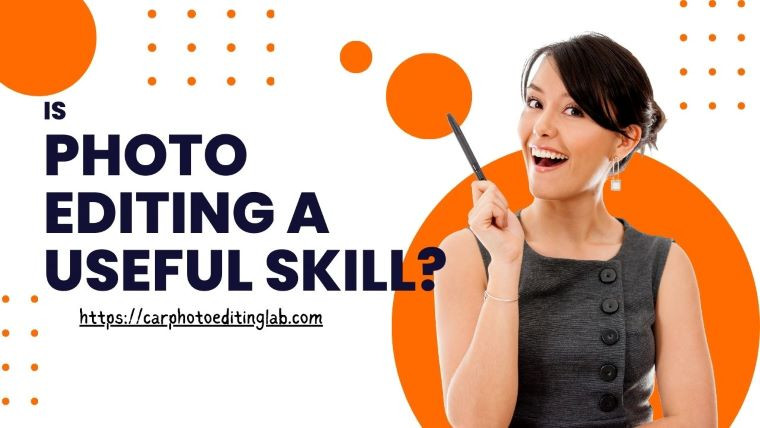-
Contact us with Whatsapp:
+8801734997063 -
Mail Us:
[email protected] -
Service Hours
24/7
Is photo editing a useful skill?

May 2024
- 01 May 2024
- Business Solution
- 0 Views
Is photo editing a useful skill?
In the digital age, where visual content dominates social media feeds and online platforms, the art of photo editing has become increasingly prevalent. From amateur enthusiasts to professional photographers, the ability to enhance and manipulate images has transformed the way we perceive and interact with visual media. But amidst the filters and effects, the question arises: is photo editing truly a useful skill?
In this blog post, we'll delve into the significance of photo editing in today's society, exploring its practical applications, creative potential, and ethical considerations.
What is Photo Editing?
Photo editing is the process of altering or enhancing photographs using specialized software or applications. It involves manipulating various aspects of an image to improve its visual appeal, correct imperfections, or achieve a desired artistic effect. Common editing techniques include adjusting brightness, contrast, and color balance, as well as cropping, resizing, and removing unwanted elements from the frame.
Photo editing software, such as Adobe Photoshop, Lightroom, or GIMP, provides a wide range of tools and features to modify images with precision and flexibility. These tools enable users to perform tasks like retouching portraits, adding text or graphics, applying filters and effects, and combining multiple images into a composite.
Photo editing serves multiple purposes, from enhancing the aesthetic quality of photographs to meeting specific requirements for professional projects or personal preferences. Whether it's enhancing the vibrancy of a landscape, removing blemishes from a portrait, or creating artistic compositions, photo editing empowers individuals to transform their images and unleash their creativity.
The Practical Applications of Photo Editing
Photo editing skills extend far beyond simply making images look prettier. In many professional fields, such as marketing, advertising, and graphic design, proficiency in photo editing software is essential. Companies rely on visually appealing content to attract customers and convey their brand message effectively.
For instance, in the realm of e-commerce, product photos play a crucial role in influencing consumer purchasing decisions. By using photo editing techniques to enhance product images, businesses can showcase their offerings in the best possible light, ultimately driving sales and revenue.
Moreover, in journalism and media, photo editing allows for the manipulation of images to better tell a story or convey a specific narrative. While ethical considerations come into play here (which we'll discuss later), the ability to edit photos can enhance the impact of news articles and documentaries, providing a more immersive experience for audiences.
Unleashing Creative Potential
Beyond its practical applications, photo editing also serves as a powerful tool for unleashing creative expression. Artists and photographers use editing software to transform their raw captures into stunning works of art, pushing the boundaries of reality and imagination.
From surreal landscapes to abstract compositions, the possibilities are endless when it comes to creative photo editing. Digital artists can experiment with various techniques, such as composition, color grading, and manipulation, to bring their visions to life in ways that traditional photography alone cannot achieve.
Furthermore, photo editing allows individuals to personalize their photos and express their unique style. Whether it's adding vintage effects for a nostalgic vibe or creating whimsical edits with overlays and textures, editing software empowers users to put their creative stamp on their images, fostering a sense of ownership and identity.
Ethical Considerations
While photo editing offers immense creative freedom, it also raises ethical concerns regarding the authenticity and manipulation of images. In an era of digital misinformation and "fake news," the line between enhancing photos for artistic purposes and deceiving audiences becomes increasingly blurred.
The prevalence of photo manipulation has sparked debates about the ethical responsibilities of photographers and editors. In journalism, altering images to misrepresent facts or distort reality undermines the integrity of the profession and erodes public trust. Therefore, it's crucial for media organizations to adhere to strict ethical guidelines and uphold the principles of transparency and truthfulness.
Similarly, in the age of social media influencers and aspirational lifestyles, there's a growing awareness of the unrealistic beauty standards perpetuated by heavily edited photos. The phenomenon of "Instagram vs. Reality" The pervasive pressure to maintain a flawless online persona often fosters feelings of inadequacy and diminishes self-esteem among users.
Conclusion: The Value of Photo Editing
In conclusion, while photo editing undoubtedly offers valuable practical applications and creative opportunities, its true worth lies in how it's used. When employed responsibly and ethically, photo editing can enhance visual communication, inspire creativity, and evoke emotion.
However, it's essential to recognize the ethical considerations inherent in the practice and strive for transparency and authenticity in our visual representations. By embracing photo editing as a tool for expression rather than deception, we can harness its full potential to enrich our lives and elevate the art of photography in the digital age.
























0 Comment